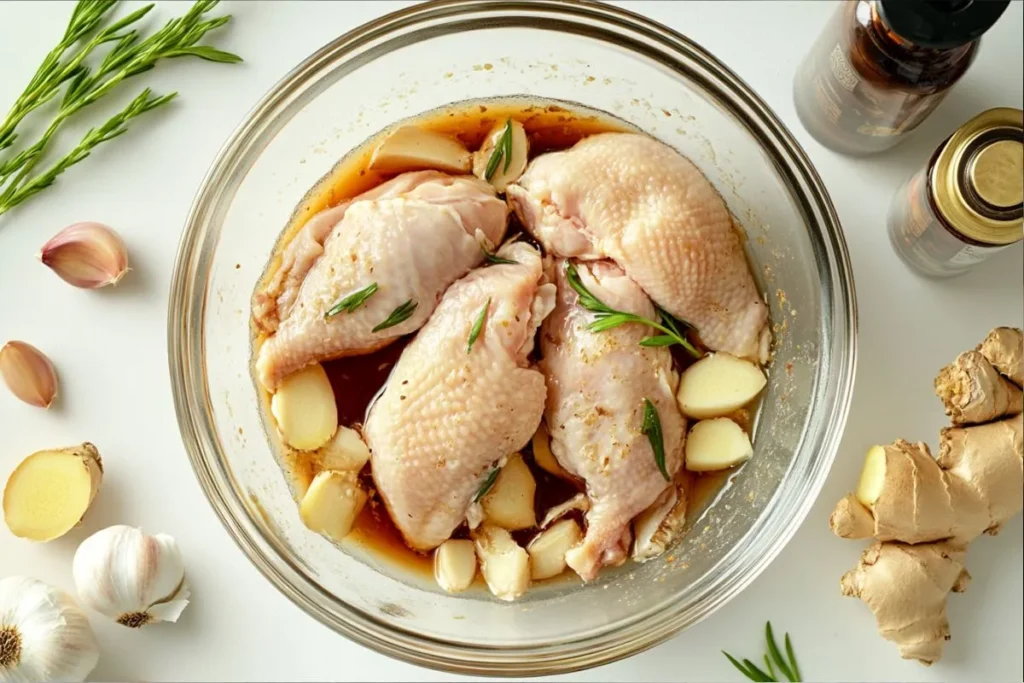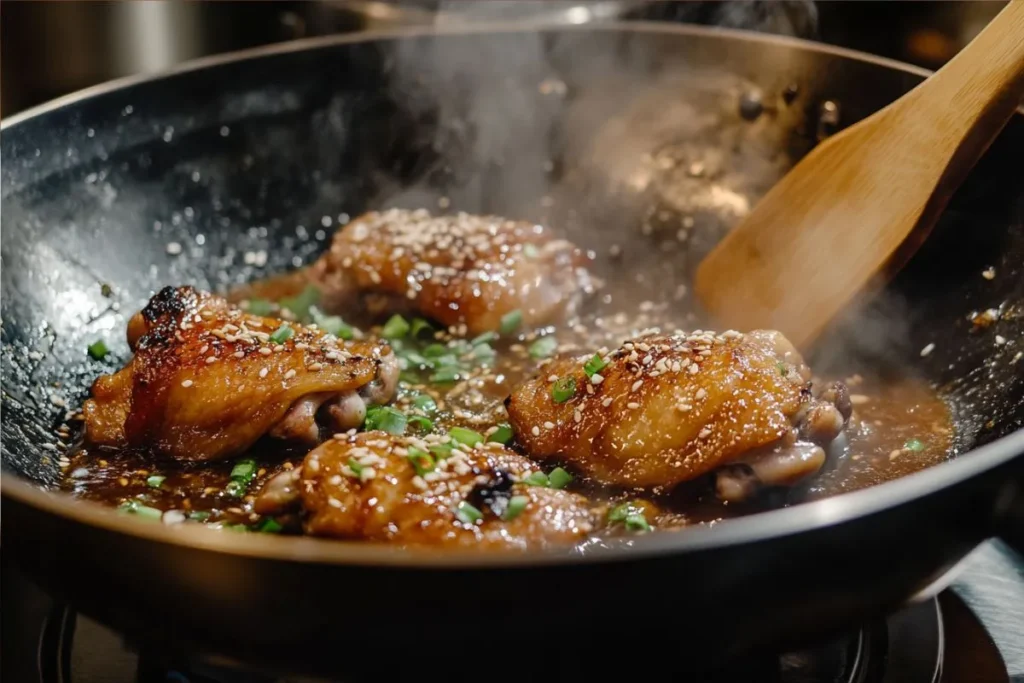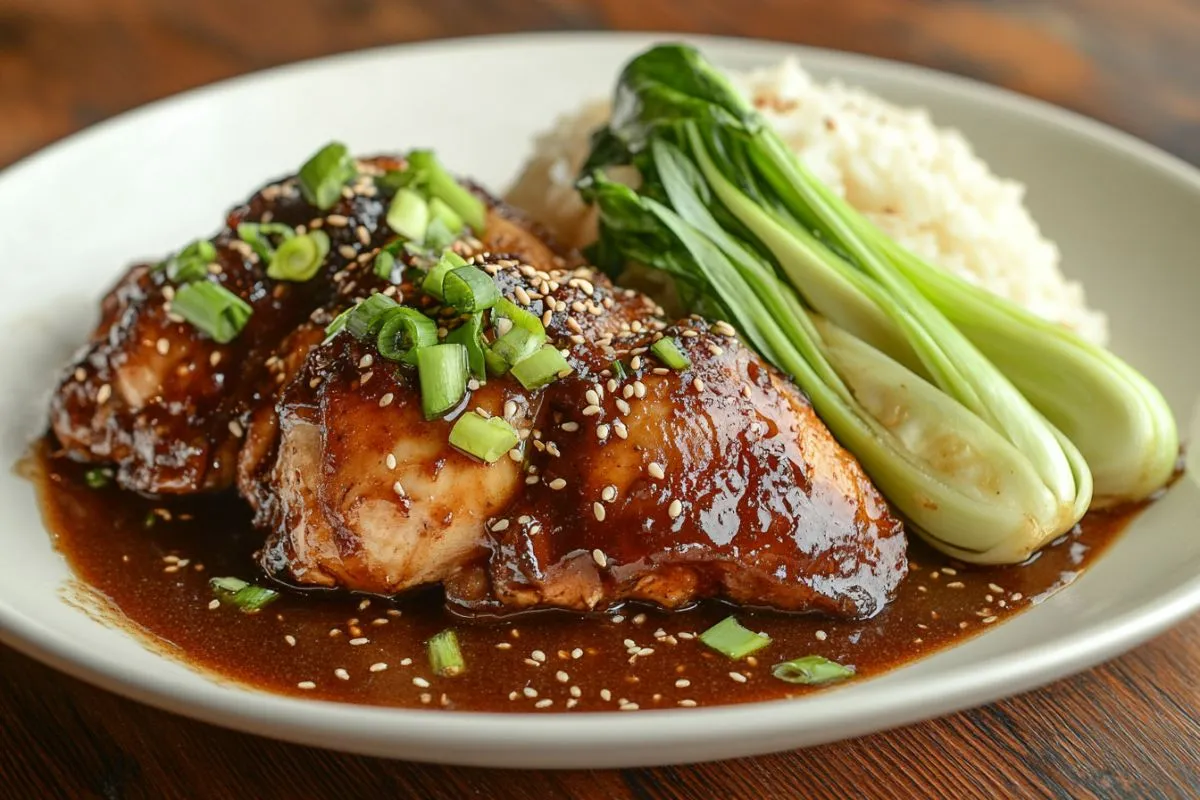Have you ever wondered what makes Emperor’s Chicken such a celebrated dish? With a name that exudes royalty, this traditional creation has captivated taste buds with its rich history, tender textures, and bold flavors. Originating from Chinese cuisine, Emperor’s Chicken is often associated with special occasions and indulgence. But what exactly is it, and how is it prepared?
This article dives deep into the origins, ingredients, and cooking techniques that define Emperor’s Chicken. You’ll also learn how it compares to other famous dishes like Empress Chicken and why it deserves a spot on your must-try list. Whether you’re a food enthusiast or just curious about its regal title, we’ve got you covered.
The Origins of Emperor’s Chicken
Where Does Emperor’s Chicken Come From?
Emperor’s Chicken, as the name suggests, has a regal association rooted in Chinese culinary traditions. It’s believed to have been a dish created to honor Chinese emperors, symbolizing luxury, prosperity, and celebration. The dish’s origins trace back to ancient times when meals were designed to showcase the finest ingredients and meticulous preparation techniques.
Traditionally, the dish was served during grand feasts and royal banquets, reflecting the sophistication and elegance of the imperial court. Over time, Emperor’s Chicken transitioned from an exclusive royal meal to a popular choice in Chinese households and restaurants, keeping its association with richness and quality intact.
The Role of Emperor’s Chicken in Traditional Cuisine
In Chinese cuisine, food is often intertwined with culture and meaning, and Emperor’s Chicken is no exception. The dish embodies the idea of balance—combining savory, sweet, and umami flavors to create a harmonious experience. Its preparation often involves cooking methods like steaming or braising, which were historically considered the healthiest and most refined techniques.
Today, Emperor’s Chicken remains a staple at festive gatherings, including Chinese New Year celebrations and weddings, symbolizing prosperity and good fortune. Its versatility and luxurious flavor profile ensure its enduring popularity across generations.
What is Emperor’s Chicken Made Of?
Key Ingredients
The beauty of Emperor’s Chicken lies in its simplicity and focus on quality ingredients. At its heart is tender chicken, often marinated in a blend of soy sauce, ginger, and garlic. These flavors create a harmonious balance of savory and aromatic notes, making every bite unforgettable.
The sauce is the star of this dish, combining soy sauce, sugar, and a hint of sesame oil for richness. Unlike dishes like Empress Chicken, Emperor’s Chicken often skips the tangy elements and focuses on earthy, bold flavors. If you’d like to explore Empress Chicken’s flavor profile, you can find the recipe here.

Ingredient Variations Across Regions
While the core ingredients remain the same, regional variations add unique twists. In northern Chinese cuisine, the dish may include star anise for a deeper aroma. In southern regions, the sauce might lean sweeter, incorporating honey or hoisin sauce.
Home cooks can customize the dish by adding vegetables like bok choy or mushrooms for added texture and nutrition. These variations ensure that Emperor’s Chicken can cater to different palates and preferences.
How Emperor’s Chicken is Cooked
Traditional Cooking Techniques
Emperor’s Chicken is often steamed or braised to perfection. These methods allow the chicken to absorb the sauce deeply, resulting in tender, juicy meat. Steaming highlights the delicate balance of flavors, while braising intensifies the savory notes, creating a rich, aromatic dish.
The use of low, steady heat in braising ensures the chicken remains moist, while the sauce thickens into a glaze that clings beautifully to the meat. For a detailed guide on creating similar dishes, check out our Melt-in-Your-Mouth Chicken recipe here.

Modern Adaptations
In today’s kitchens, Emperor’s Chicken has evolved to fit modern cooking styles. For instance, pressure cookers and slow cookers make it easy to achieve the same tender results in a fraction of the time. For home cooks seeking approachable options, the dish can also be baked with a simplified sauce.
Looking to experiment with other chicken dishes? Discover the similarities and differences in our comparison of Empress Chicken and General Tso’s Chicken here.
Emperor’s Chicken vs. Empress Chicken
How Do These Dishes Differ?
When comparing Emperor’s Chicken to Empress Chicken, the distinctions are subtle but significant. While both dishes originate from Chinese-inspired cuisine, their flavor profiles and preparation techniques set them apart.
Flavor Profiles
- Emperor’s Chicken leans toward savory and umami flavors, often highlighting garlic, ginger, and soy sauce. The sauce tends to be thicker and less tangy, creating a robust and hearty taste.
- Empress Chicken, on the other hand, is known for its tangy and slightly sweet sauce, often incorporating ingredients like rice vinegar and sugar to balance flavors. For a complete breakdown of Empress Chicken, you can refer to our Empress Chicken recipe.
Cooking Techniques
- Emperor’s Chicken typically involves steaming or braising, which locks in moisture and ensures tenderness.
- Empress Chicken is often stir-fried or coated and fried, giving it a lighter, crispier texture.
Why You Should Try Both
Both dishes offer unique culinary experiences, making them worth exploring. Emperor’s Chicken is perfect for those who enjoy bold, savory dishes with deep, rich flavors. On the other hand, Empress Chicken appeals to fans of tangy, balanced meals.
If you’re curious about how Empress Chicken compares to other popular dishes like General Tso’s Chicken, check out our detailed comparison here.
Cooking Emperor’s Chicken: Techniques and Tips
Traditional Preparation Methods
To truly capture the essence of Emperor’s Chicken, focus on cooking methods that enhance its rich flavors and tender texture. Chefs traditionally prepare this dish by braising or steaming. Braising allows the meat to absorb a flavorful marinade, while steaming keeps the chicken juicy and tender.
For a crispy twist, some variations opt for a light coating of cornstarch or flour before frying. This method is popular in restaurants aiming to offer a crunchier version of the classic dish.
Balancing Flavors
The key to making the perfect Emperor’s Chicken lies in balancing its savory, sweet, and umami flavors. Start with a marinade of soy sauce, ginger, and garlic for a savory base. Adding honey or sugar introduces a hint of sweetness, while oyster sauce or fermented bean paste deepens the umami notes.
For those who prefer a tangy kick, a splash of rice vinegar or fresh lemon juice can add a zesty contrast.
Serving Tips
Pair Emperor’s Chicken with steamed jasmine rice or fried noodles to soak up the sauce. Complement the dish with sautéed vegetables like bok choy or snow peas for added crunch and color.
Pro Tip: If you’re short on time, use a pressure cooker or slow cooker for consistent results without compromising flavor.
Modern Takes on This Regal Dish
How Modern Chefs Adapt This Classic Recipe
As culinary trends shift, traditional dishes often take on new forms to suit modern preferences, and this royal chicken creation is no different. Today, chefs reimagine the recipe to streamline cooking while preserving its iconic flavors. Tools like air fryers and pressure cookers have made the process quicker and more convenient, without sacrificing the dish’s signature tenderness and depth.
In addition, health-conscious adaptations are becoming more common. Some chefs reduce oil usage or substitute regular soy sauce with its low-sodium counterpart to make the meal lighter. Moreover, for home cooks, pre-mixed marinades offer an easy alternative to traditional methods, thus allowing anyone to replicate authentic flavors with minimal effort.
Furthermore, this dish’s versatility has led to creative pairings as well. It’s not unusual to find it served with modern accompaniments like quinoa or roasted vegetables, thereby offering a fusion of tradition and contemporary dietary trends. Ultimately, these innovations ensure the recipe remains relevant and appealing across generations.
For insights on adapting traditional recipes to fit a healthy lifestyle, explore these tips on MyPlate.gov.
The Dish’s Role in Contemporary Cuisine
Even with its many adaptations, this time-honored meal retains its royal essence. Its rich, bold flavors and succulent texture continue to make it a centerpiece for festive gatherings and a favorite for cozy family dinners. Whether paired with classic sides like jasmine rice or modern ingredients, it consistently delivers satisfaction.
This dish’s ability to evolve while maintaining its roots speaks volumes about its timeless appeal. Whether cooked in a traditional steamer or using a pressure cooker, it delights diners with its unique flavor profile and adaptability. It’s no surprise that this culinary gem continues to captivate food lovers around the world.
Why Emperor’s Chicken Stands Out in Contemporary Cuisine
Despite modern tweaks, Emperor’s Chicken continues to captivate diners because of its versatility. It works equally well for casual weeknight meals and festive gatherings. The dish’s rich sauce and tender chicken make it a showstopper, whether paired with classic sides like jasmine rice or fusion-inspired accompaniments.
If you’re looking for more ideas to elevate your dinner table, check out our Melt-in-Your-Mouth Chicken recipe here for another take on juicy, flavorful chicken.
Why You Should Try Emperor’s Chicken
A Dish That Bridges Tradition and Innovation
Emperor’s Chicken isn’t just a meal—it’s a culinary experience that connects the past and present. Rooted in tradition, the dish honors ancient Chinese cooking techniques while embracing modern adaptations. Whether steamed, braised, or baked, the dish consistently delivers bold, savory flavors that delight the palate.
Its simplicity explains why so many people love it. With just a handful of quality ingredients, this dish delivers a satisfying and memorable dining experience. Both seasoned chefs and novice cooks can easily prepare it without much effort.
Make It Your Own
What makes Emperor’s Chicken truly special is its flexibility. For instance, you can stick to the classic recipe for an authentic experience or experiment with new flavors to suit your taste. Additionally, adding a touch of spice, incorporating fresh herbs, or even serving it with non-traditional sides can give the dish a fresh twist.
If you haven’t yet tried this regal dish, now’s the perfect time. Whether you’re a fan of Chinese-American cuisine or just curious about the story behind the name, Emperor’s Chicken is sure to impress.
For more tips on creating balanced and nutritious meals, visit the American Heart Association’s guide on healthy eating.
FAQ
What is the most popular Chinese chicken dish?
Chinese cuisine boasts numerous popular chicken dishes, each with its unique flavor profile. General Tso’s Chicken, Kung Pao Chicken, and Orange Chicken are household names globally. However, Emperor’s Chicken holds a special place as a dish steeped in tradition. Its rich, savory sauce and tender texture make it a standout choice for those seeking a more authentic culinary experience.
Why is chicken from Chinese restaurants so soft?
The secret to the tender texture lies in techniques like velveting. This involves coating the chicken in a mixture of cornstarch, egg whites, and a touch of acid like vinegar. Emperor’s Chicken achieves a similar result through marination and slow cooking methods, ensuring the meat stays moist and juicy.
Why is it called Empress Chicken?
The name “Empress Chicken” reflects its elegance and refined flavor, making it a dish fit for royalty. While Empress Chicken often features a tangy-sweet profile, Emperor’s Chicken leans more toward bold, umami-rich flavors. For more on Empress Chicken, check out our Empress Chicken recipe.
What is the difference between General Tso’s Chicken and Empress Chicken?
Though both are popular Chinese-American dishes, their flavors and textures differ significantly. General Tso’s Chicken is spicier and sweeter, while Empress Chicken has a tangy, lighter flavor. Learn more in our detailed comparison here.
Conclusion
Bringing It All Together: Why Emperor’s Chicken is Worth a Try
Now that we’ve explored the question, What is Emperor’s Chicken?, it’s clear this dish is more than just a meal—it’s a connection to Chinese culinary heritage. Its bold flavors, tender texture, and rich history make it a must-try for anyone who loves exploring the diverse world of Asian cuisine.
Whether prepared in its traditional form or adapted to modern tastes, Emperor’s Chicken consistently delivers a satisfying dining experience. Its ability to evolve while retaining its essence is a testament to its timeless appeal.
Your Next Culinary Adventure
If this article has piqued your interest, why not give Emperor’s Chicken a try? With simple ingredients and straightforward techniques, it’s a dish that’s approachable for cooks of all levels. And while you’re at it, explore our Empress Chicken recipe to experience another regal creation.
Emperor’s Chicken is more than just food—it’s a story, a tradition, and a celebration of flavors. Are you ready to discover why this dish has captured hearts for generations? Let us know how it turns out, and don’t forget to share your culinary creations!

